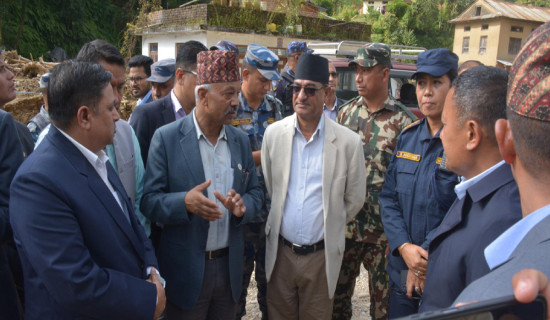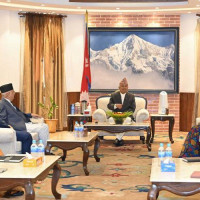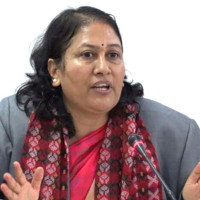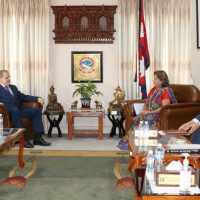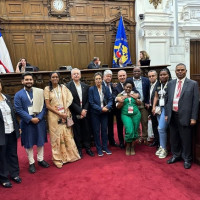- Tuesday, 8 October 2024
PM Oli discusses action plan to boost power capacity
By A Staff Reporter,Kathmandu, Oct. 8: Prime Minister KP Sharma Oli held a discussion with ministers and senior officials regarding an energy development action plan aimed at significantly increasing Nepal’s power generation capacity and electricity consumption.
The meeting, conducted at the Office of the Prime Minister and the Council of Ministers in Singha Durbar, focused on accelerating legal, policy, and institutional reforms to achieve the goal of generating 28,500 megawatts of electricity by 2035.
Additionally, the meeting concluded that programmes concentrating on production, infrastructure development, business strategies, and financial resource management would be rapidly advanced to meet the target of generating 28,500 megawatts of electricity by 2035, as informed by the Prime Minister’s Secretariat.
The discussion also addressed challenges related to land acquisition, forest conservation, and environmental issues that are impacting the implementation of infrastructure projects in the energy and irrigation sectors.
During the meeting, Prime Minister Oli instructed the relevant authorities to eliminate procedural delays and policy ambiguities that hinder progress and inflate costs.
Highlighting the increase in electricity production, Prime Minister Oli directed officials to diversify the electricity business by establishing a dedicated transmission line in India for exporting electricity to Bangladesh. He also emphasised the importance of utilising Bangladesh as a transit point for exporting electricity to other countries.
The Prime Minister stated that the Nepal Electricity Authority (NEA) should concentrate on resolving disputes related to project compensation and transmission lines. He further asserted that the NEA should operate systematically, adhering to principles of reasonableness and aligning with its scope of work.
“There should not be a situation where the state is powerless to act despite witnessing irregularities and manipulations in this sector,” he remarked, adding, “We should not act based on power and strength but in accordance with the country’s laws, rules, and needs of the time.”
He also noted the necessity of expanding hydroelectric power generation.
The Prime Minister informed that the action plan aims to generate 28,500 megawatts of electricity by 2035, focusing on both consumption and export, potentially generating an annual income of Rs. 2.65 trillion for the country. Additionally, it is projected that implementing this plan would create 865,180 jobs.
The total estimated cost for production, transmission, and distribution is USD 46.5 billion. Currently, Nepal’s electricity generation capacity stands at 3,243 megawatts.
During Prime Minister Oli’s first tenure, the Cabinet meeting on 18 February 2016 approved and implemented the concept paper and action plan related to the National Energy Crisis Prevention and Electricity Development Decade. As a result of this action plan, Nepal successfully became free from load shedding from 15 May 2018, according to the PM’s Secretariat.
The meeting was attended by Deputy Prime Minister and Finance Minister Bishnu Prasad Paudel, Minister for Foreign Affairs Dr. Arzu Rana Deuba, Minister for Energy, Water Resources and Irrigation Dipak Khadka, and Chief Secretary Ek Narayan Aryal.



